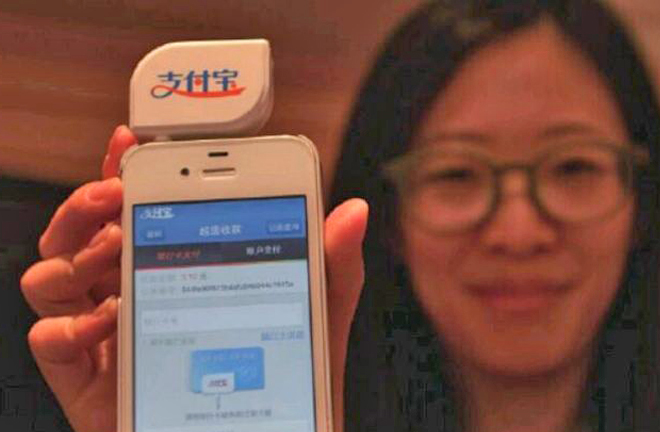In past decade, China made great strides in IP protection

China embraced the innovation-driven era in which the innovative potential of 1.3 billion people was released, so a massive batch of companies went global due to their innovative products.
China is shaking off the label of the “world’s factory” and moving up the global value chain, according to the 2017 World Intellectual Property Report on Intangible Capital in Global Value Chains.
Back in 2008, a financial crisis that originated in the United States engulfed the world. All countries were in an urgent need of finding a way to achieve sustainable economic development, and China was no exception. In the same year, China’s national strategy for intellectual property took shape, and thus innovation began to produce value. The patent system allowed the country to legally guarantee enterprises the exclusive right to profit from their open innovation achievements, which not only compensated the creators but also motivated future innovators to develop new technologies.
In June 2008, the State Council promulgated the Outline of the National Intellectual Property Strategy based on years of research, drafting and demonstration, which marked the beginning of the national strategy for intellectual property.
Since then, China has entered a new golden age of innovation. The innovative potential of 1.3 billion people was unleashed, and a massive batch of companies brought the cutting-edge products to the global market, such as Alibaba, Tencent, Baidu and Huawei.
The reform and opening up stimulated the enterprising spirit of the Chinese people, propelling the country to become the second-largest economy in the world in just four decades. Similarly, the country’s ability to innovate has increasingly been boosted in the past 10 years as the national strategy for intellectual property activated the people’s capacity for creativity. The statistics speak for themselves.
In terms of China’s mainland, the number of effective invention patents grew from 96,000 to 1.36 million between 2007 and 2017. During the same period, the number of PCT international patent applications surged from 5,455 to roughly 51,000, taking second place globally. A total of 2.4 million trademarks were registered validly in 2007 and the amount increased to nearly 15 million, ranking the first in the world.
The strategy fundamentally changed the awareness of state agencies and enterprises toward copyright issues. All governments at central, provincial, city and county levels and more than 37,000 companies across the country had adopted authorized software by the end of 2013. A long-term mechanism has been gradually established, said Zhuang Rongwen, the director of the National Copyright Administration.
Besides, China is paying greater attention to intellectual property protection. Hu Yunteng from the Adjudication Committee of the Supreme People’s Court gave a full picture of the past decade. The number of first-instance IP cases received by the courts across the country grew fourfold between 2009 and 2017—an average annual growth rate of about 18 percent. A total of nearly 750,000 first-instance IP cases were settled during the same period and the average annual rate of case settlement exceeded 95 percent.
The number of case settlements has risen sharply though there was no significant increase in the number of judges. And the rate of case settlement remained relatively high. The successful trials of a series of complex and influential cases clarified the legal standards and behavioral codes, serving to guide sector development. For example, a trademark dispute between Michael Jordan and a Chinese-based sportswear company was settled, and the Supreme People’s Court ordered the company to stop using the player’s name in Chinese script. In terms of the packaging disputes between two herbal tea manufacturing giants, the court ruled that they shall share the use of iconic red can design.
Apple CEO Tim Cook stayed in China for a week at the end of 2017. In an interview with the American magazine Fortune, he voiced the global view on China’s innovative economy, saying that China no longer depends on its demographic dividend and previous development pattern. Instead, the country is improving quality and efficiency by promoting innovation. The shift is the direct result of the national strategy for intellectual property.
China’s ability to innovate has been remarkably boosted as well. China moved up to No. 22 in the innovation index, according to the 2017 Global Index Report of the WIPO. This marked another significant step forward for China as it became the only middle-income country to enter the top 25 for the second consecutive year.
“It was initiated as a domestic strategy. Now, we also aim to promote the field of intellectual property in the entire world” said Wu Handong, honorary director of the Intellectual Property Research Center at Zhongnan University of Economics and Law. China once passively accepted and followed the rules on international intellectual property. It needs to participate in the establishment of the international IP protection system and share benefits with other countries.
In terms of IP guidance, China adheres to the principle of cooperation and avoids confrontation. We pursue common goals while reserving necessary differences with the developed Western countries and pursue a mutual beneficial situation with the emerging economies. Meanwhile, we develop our relationship with underdeveloped countries in an inclusive manner, Wu added.
“In the past 10 years, China has established formal cooperative relationships with 50 WIPO members. Currently, China will strengthen IP, which is one of its major measures to expand the opening up. The move is a testament to the country’s firm stand and clarified attitude that it will abide by the law to protect intellectual property,” said Shen Changyu, director of the State Intellectual Property Office.
The article was edited and translated from Guangming Daily.
(edited by MA YUHONG)

 PRINT
PRINT CLOSE
CLOSE